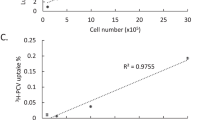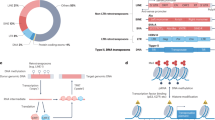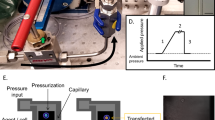Abstract
The Sleeping Beauty (SB) transposon system is an important tool for genetic studies. It is used to insert a gene of interest into the host chromosome, thus enabling permanent gene expression. However, this system is less useful in higher eukaryotes because the transposition frequency is low. Efforts to improve the efficacy of the SB transposon system have focused on the method of gene delivery, but although electroporation has recently attracted much attention as an in vivo gene delivery tool, the simultaneous use of electroporation and the SB transposon system has not been studied for gene transfer in mice. In this study, electroporation was used in a model of SB transposon-induced insertional tumorigenesis. Electroporation increased the rate of tumor development to three times that of the control group. There was no difference in phenotype between tumors induced with the SB transposon system alone and those induced by the SB transposon and electroporation. Electroporation therefore may be an efficient means of improving the efficacy of gene transfer via the SB transposon system.
This is a preview of subscription content, access via your institution
Access options
Subscribe to this journal
Receive 12 print issues and online access
$259.00 per year
only $21.58 per issue
Buy this article
- Purchase on Springer Link
- Instant access to full article PDF
Prices may be subject to local taxes which are calculated during checkout







Similar content being viewed by others
References
Belur LR, Podetz-Pedersen KM, Sorenson BS, Hsu AH, Parker JB, Carlson CS et al. Inhibition of angiogenesis and suppression of colorectal cancer metastatic to the liver using the Sleeping Beauty Transposon System. Mol Cancer 2011; 10: 14.
Howell VM . Sleeping beauty—a mouse model for all cancers? Cancer Lett 2012; 317: 1–8.
Carlson CM, Frandsen JL, Kirchhof N, McIvor RS, Largaespada DA . Somatic integration of an oncogene-harboring Sleeping Beauty transposon models liver tumor development in the mouse. Proc Natl Acad Sci USA 2005; 102: 17059–17064.
Akli S, Caillaud C, Vigne E, Stratford-Perricaudet LD, Poenaru L, Perricaudet M et al. Transfer of a foreign gene into the brain using adenovirus vectors. Nat Genet 1993; 3: 224–228.
Bajocchi G, Feldman SH, Crystal RG, Mastrangeli A . Direct in vivo gene transfer to ependymal cells in the central nervous system using recombinant adenovirus vectors. Nat Genet 1993; 3: 229–234.
Davidson BL, Allen ED, Kozarsky KF, Wilson JM, Roessler BJ . A model system for in vivo gene transfer into the central nervous system using an adenoviral vector. Nat Genet 1993; 3: 219–223.
Nabel EG, Plautz G, Nabel GJ . Site-specific gene expression in vivo by direct gene transfer into the arterial wall. Science 1990; 249: 1285–1288.
Nabel EG, Plautz G, Nabel GJ . Gene transfer into vascular cells. J Am Coll Cardiol 1991; 17: 189B–194B.
Le Gal La Salle G, Robert JJ, Berrard S, Ridoux V, Stratford-Perricaudet LD, Perricaudet M et al. An adenovirus vector for gene transfer into neurons and glia in the brain. Science 1993; 259: 988–990.
Ragot T, Vincent N, Chafey P, Vigne E, Gilgenkrantz H, Couton D et al. Efficient adenovirus-mediated transfer of a human minidystrophin gene to skeletal muscle of mdx mice. Nature 1993; 361: 647–650.
Ram Z, Culver KW, Walbridge S, Blaese RM, Oldfield EH . In situ retroviral-mediated gene transfer for the treatment of brain tumors in rats. Cancer Res 1993; 53: 83–88.
Morris BD Jr., Drazan KE, Csete ME, Werthman PE, Van Bree MP, Rosenthal JT et al. Adenoviral-mediated gene transfer to bladder in vivo. J Urol 1994; 152: 506–509.
Duzgunes N, Felgner PL . Intracellular delivery of nucleic acids and transcription factors by cationic liposomes. Methods Enzymol 1993; 221: 303–306.
Thierry AR, Lunardi-Iskandar Y, Bryant JL, Rabinovich P, Gallo RC, Mahan LC . Systemic gene therapy: biodistribution and long-term expression of a transgene in mice. Proc Natl Acad Sci USA 1995; 92: 9742–9746.
Dzau VJ, Mann MJ, Morishita R, Kaneda Y . Fusigenic viral liposome for gene therapy in cardiovascular diseases. Proc Natl Acad Sci USA 1996; 93: 11421–11425.
Mulligan RC . The basic science of gene therapy. Science 1993; 260: 926–932.
Neumann E, Schaefer-Ridder M, Wang Y, Hofschneider PH . Gene transfer into mouse lyoma cells by electroporation in high electric fields. EMBO J 1982; 1: 841–845.
Keating A, Toneguzzo F . Gene transfer by electroporation: a model for gene therapy. Prog Clin Biol Res 1990; 333: 491–498.
Belehradek J Jr., Orlowski S, Poddevin B, Paoletti C, Mir LM . Electrochemotherapy of spontaneous mammary tumours in mice. Eur J Cancer 1991; 27: 73–76.
Belehradek M, Domenge C, Luboinski B, Orlowski S, Belehradek J Jr., Mir LM . Electrochemotherapy, a new antitumor treatment. First clinical phase I-II trial. Cancer 1993; 72: 3694–3700.
Salford LG, Persson BR, Brun A, Ceberg CP, Kongstad PC, Mir LM . A new brain tumour therapy combining bleomycin with in vivo electropermeabilization. Biochem Biophys Res Commun 1993; 194: 938–943.
Yamaguchi O, Irisawa C, Baba K, Ogihara M, Yokota T, Shiraiwa Y . Potentiation of antitumor effect of bleomycin by local electric pulses in mouse bladder tumor. Tohoku J Exp Med 1994; 172: 291–293.
Heller P . Historic reflections on the clinical roots of molecular biology. Ann N Y Acad Sci 1995; 758: 83–93.
Nishi T, Yoshizato K, Yamashiro S, Takeshima H, Sato K, Hamada K et al. High-efficiency in vivo gene transfer using intraarterial plasmid DNA injection following in vivo electroporation. Cancer Res 1996; 56: 1050–1055.
Guo Y, Zhang Y, Klein R, Nijm GM, Sahakian AV, Omary RA et al. Irreversible electroporation therapy in the liver: longitudinal efficacy studies in a rat model of hepatocellular carcinoma. Cancer Res 2010; 70: 1555–1563.
Nishimura YV, Shinoda T, Inaguma Y, Ito H, Nagata K . Application of in utero electroporation and live imaging in the analyses of neuronal migration during mouse brain development. Med Mol Morphol 2012; 45: 1–6.
Mir LM, Orlowski S . Mechanisms of electrochemotherapy. Adv Drug Deliv Rev 1999; 35: 107–118.
Jung S, Ro SW, Jung G, Ju HL, Yu ES, Son WC . Sleeping Beauty transposon system harboring HRAS, c-Myc and shp53 induces sarcomatoid carcinomas in mouse skin. Oncol Rep 2013; 29: 1293–1298.
Park JS, Kim BH, Park SG, Jung SY, Lee DH, Son WC . Induction of rat liver tumor using the Sleeping Beauty transposon and electroporation. Biochem Biophys Res Commun 2013; 434: 589–593.
Dupuy AJ, Akagi K, Largaespada DA, Copeland NG, Jenkins NA . Mammalian mutagenesis using a highly mobile somatic Sleeping Beauty transposon system. Nature 2005; 436: 221–226.
Kim IS, Baek SH . Mouse models for breast cancer metastasis. Biochem Biophys Res Commun 2010; 394: 443–447.
Thyagarajan T, Totey S, Danton MJ, Kulkarni AB . Genetically altered mouse models: the good, the bad, and the ugly. Crit Rev Oral Biol Med 2003; 14: 154–174.
Rivera J, Tessarollo L . Genetic background and the dilemma of translating mouse studies to humans. Immunity 2008; 28: 1–4.
Radiloff DR, Rinella ES, Threadgill DW . Modeling cancer patient populations in mice: complex genetic and environmental factors. Drug Discov Today Dis Models 2008; 4: 83–88.
Andrechek ER, Nevins JR . Mouse models of cancers: opportunities to address heterogeneity of human cancer and evaluate therapeutic strategies. J Mol Med (Berl) 2010; 88: 1095–1100.
Acknowledgements
This study was supported by a grant from the Korean Health Technology R&D Project, Ministry of Health and Welfare, Republic of Korea (HI06C0868 and HI10C2014). VGX International kindly provided Cellectra (the electroporation device).
Author information
Authors and Affiliations
Corresponding author
Ethics declarations
Competing interests
The authors declare no conflict of interest.
Rights and permissions
About this article
Cite this article
Jung, S., Choi, HJ., Park, HK. et al. Electroporation markedly improves Sleeping Beauty transposon-induced tumorigenesis in mice. Cancer Gene Ther 21, 333–339 (2014). https://doi.org/10.1038/cgt.2014.33
Received:
Revised:
Accepted:
Published:
Issue Date:
DOI: https://doi.org/10.1038/cgt.2014.33
This article is cited by
-
Optimization of piggyBac Transposon System Electrotransfection in Sheep Fibroblasts
Molecular Biotechnology (2023)
-
Gene delivery in adherent and suspension cells using the combined physical methods
Cytotechnology (2022)
-
Systematic optimization of square-wave electroporation conditions for bovine primary fibroblasts
BMC Molecular and Cell Biology (2020)
-
Identification of genes associated with cortical malformation using a transposon-mediated somatic mutagenesis screen in mice
Nature Communications (2018)



